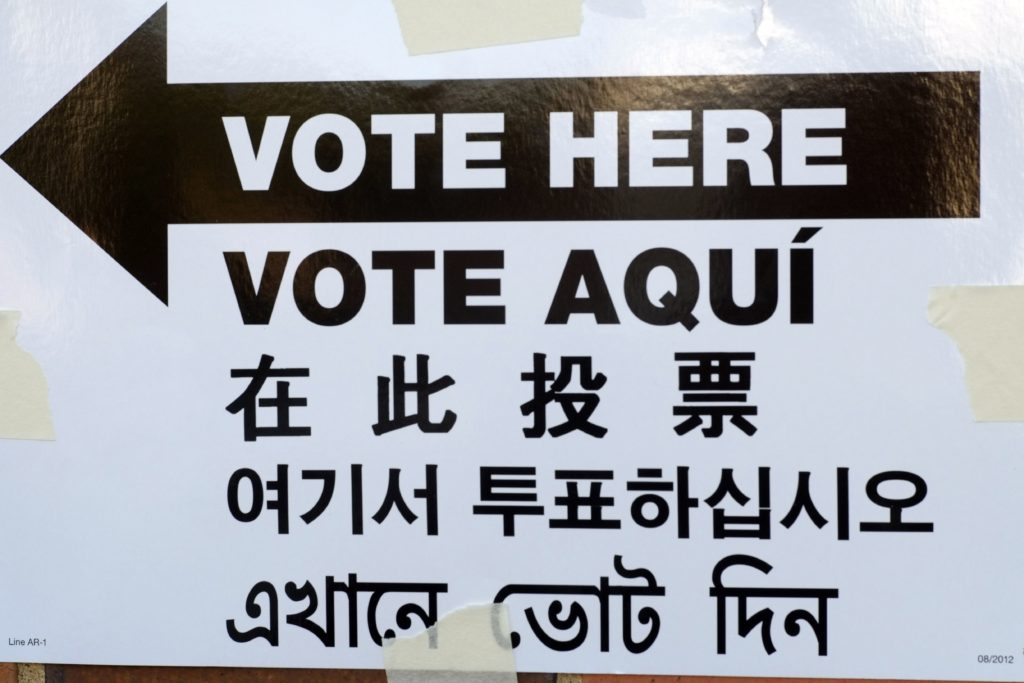A growing political force?

A sign is posted outside an election site in the Borough Park section of the Brooklyn borough of New York, Tuesday, Nov. 4, 2014. The sign reads “Vote Here” in English, Spanish, Chinese, Korean and Bengali. (AP Photo/Mark Lennihan)
Today, 17.3 million people (or 5.7%) in the US identify as Asian American. While the Asian American community is relatively small compared to African Americans and Hispanics, they are one of the fastest growing populations in America. To mark Asian Pacific American Heritage Month, Political Parity is spotlighting the accomplishments of Asian American women in politics. For one week (between May 22nd – 29th), we will build awareness through the stories of trailblazing Asian American women and encourage you to learn more about these role models.
We believe that our democracy is stronger and more effective when government reflects a full chorus of voices. By encouraging and supporting Asian American women in high-level political positions, we improve policy choices through the inclusion of varied perspectives.
Asian Americans are just gathering steam in elected office: 2.4% or 13 individuals of Congress are of Asian descent. Women represent half of this count: 6 out of 104 women in Congress, 37 out of 1,786 in state legislatures, and only 2 out of 78 women serving in statewide executive office, barely more than 1% at every level of office. Of all elected state and national women officials, more than half hail from Hawaii, California and other Western states where the majority of Asian Americans live.
 Despite recent gains in Asian American representation, voter turnout is historically low for Asian Americans, especially compared to white and black voters. In the 2014 election cycle, only three in ten Asian voters turned out.
Despite recent gains in Asian American representation, voter turnout is historically low for Asian Americans, especially compared to white and black voters. In the 2014 election cycle, only three in ten Asian voters turned out.
To address the underrepresentation of Asian American women in politics, several changes would need to be pursued:
- Heighten public debate around the barriers Asian American women face in pursuit of elected office and raise up strategies to overcome these obstacles
- Increase the consistency and frequency of culturally competent political trainings addressing Asian American women and their specific needs and challenges
- Amplify recruitment strategies and expand donor networks outside of the “old boys club”. Efforts should be deliberate and inclusive across party lines.
We hope that you follow our week-long series and share your own story on Twitter, Facebook, and other social media using the hashtag #MarchtoParity
